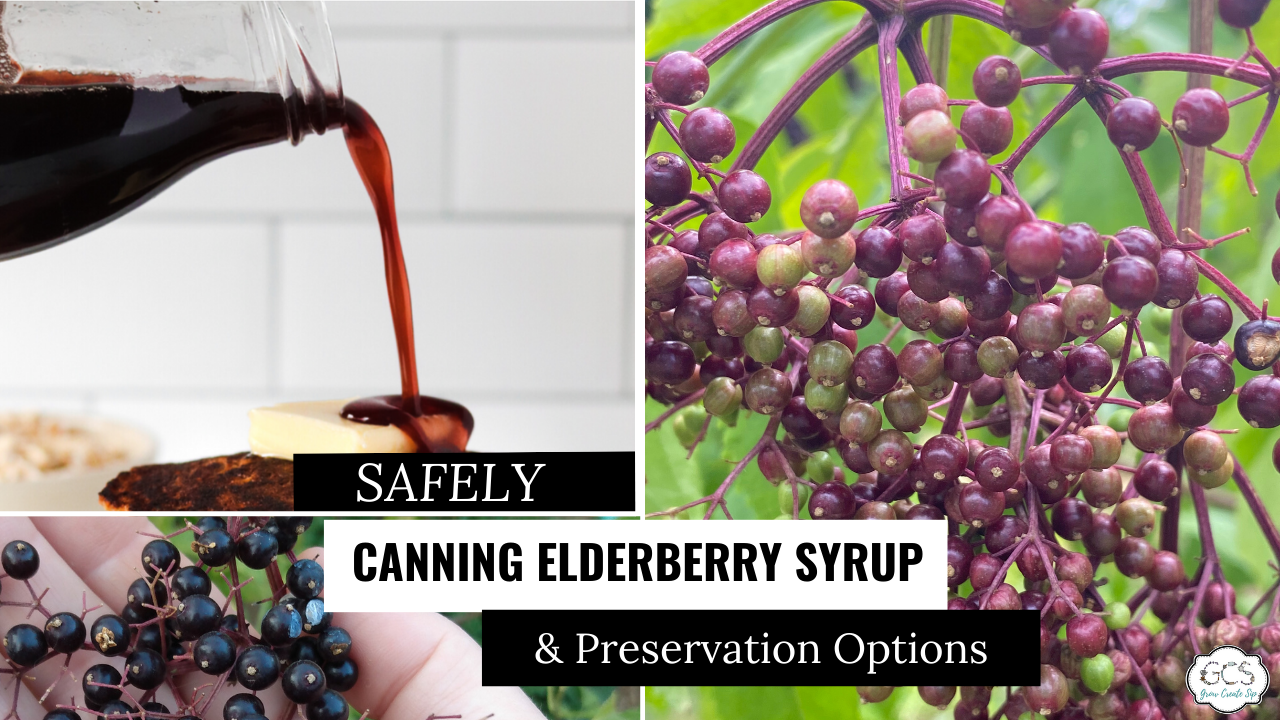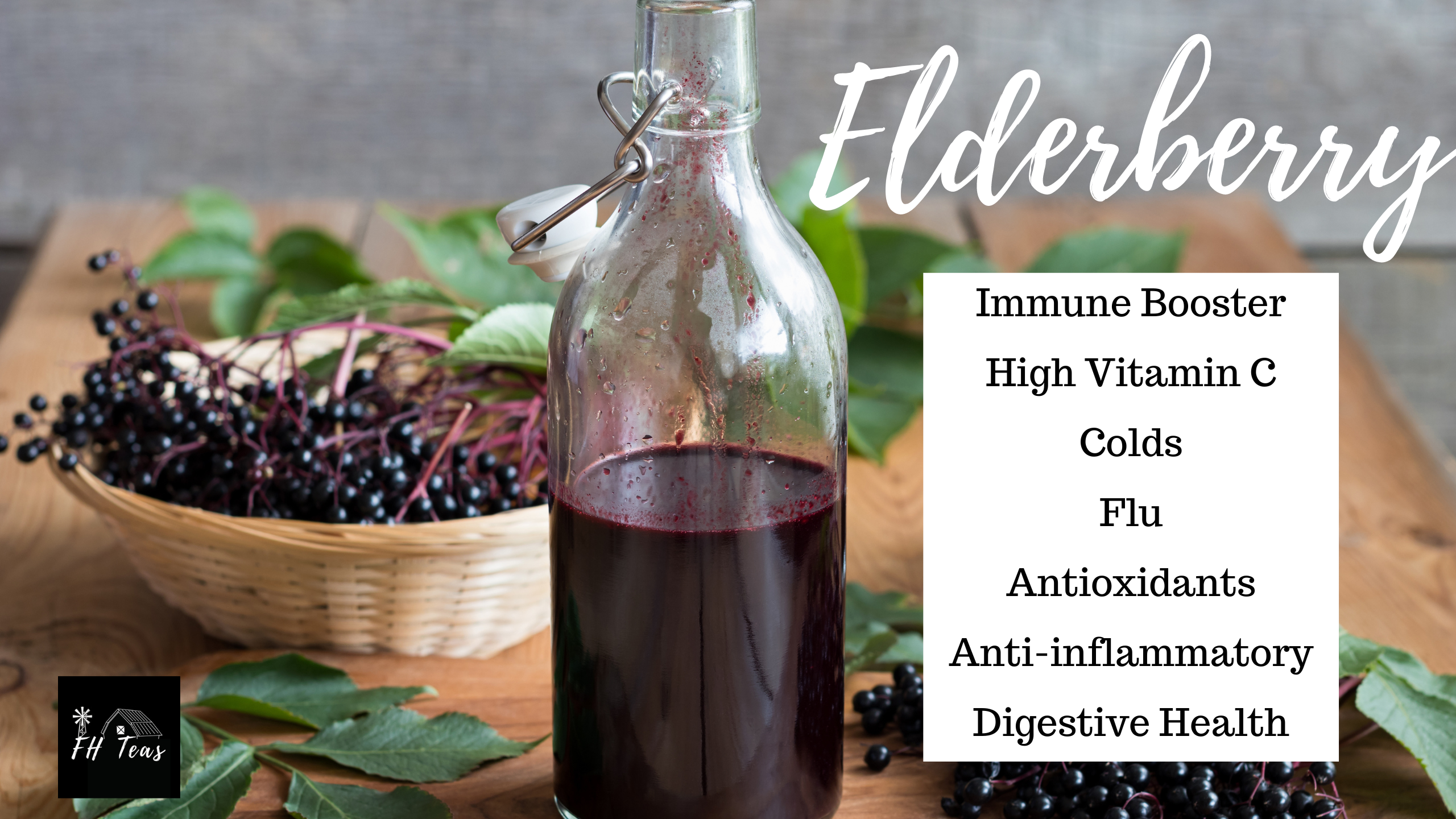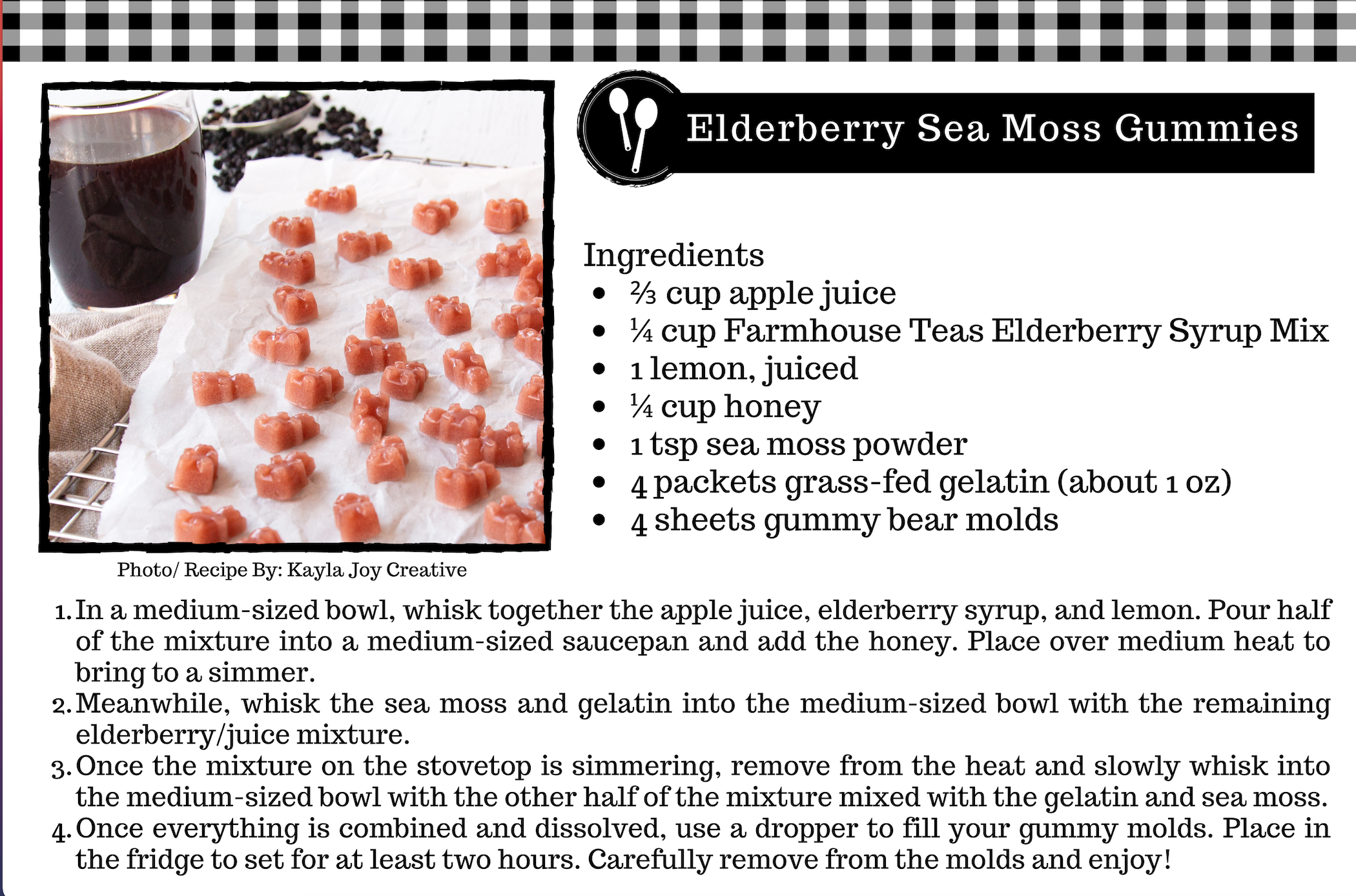Safely Canning Elderberry Syrup & Preservation Options
Aug 31, 2022
Known for its healing properties and therapeutic benefits, the elderberry is still commonly used in the prevention and treatment of many ailments.
Despite the elderberry being controversial at times, the plant with the amazing power of its berries, is a powerful natural remedy. The berries are nutritious and delicious. We could all benefit from some elderberries in our lives! We get many questions about canning elderberry syrup and after checking with my good friends in homesteading along with my good business friend who bottles her own elderberry syrup to sell I"ve come up with some great tips for you!
Continue reading to find out more about harvesting, preserving elderberries, and safely canning elderberry syrup.
What Are Elderberries?
Elderberries are dark purple or bluish berries that grow on a variety of trees or shrubs known as a Sambucus. There are many different varieties of elderberry plants. The American Elderberry, or Sambucus canadensis, and the European Elderberry, Sambucus nigra are better for medicinal purposes.

Health Benefits of Elderberries
Elderberries are packed with antioxidants and vitamins that boost your immune system. They are known to decrease inflammation, lower stress levels, and prevent or ease cold and flu symptoms.
Many European and Native American herbalists have long recognized the health benefits of elderberries, and they continue to be a first-line natural treatment of defense against many ailments.
How to Grow and Harvest Elderberries
Elderberry plants are enjoyable additions to your backyard gardens. Aside from featuring their beautiful purple and blue elderberries, they offer attractive foliage in the summer and also when the leaves change color in the fall.
Growing Elderberries
While difficult to grow from a seed, small elderberry plants purchased from a nursery or garden center adjust quickly and are easy to grow once planted.
An elderberry plant is not difficult to grow and care for, but it's best to follow a simple-but-detailed elderberry planting guide for the best results. You will have clusters of lovely elderberries growing in no time!
Harvesting Elderberries
Harvest your fresh elderberries when they are a deep, dark purple color, or almost black. The clusters should be drooping, heavy with sweet, ripe berries. Make sure that the cluster is fully ripe—you want to avoid any green or red berries. Personally I harvest mine a little early before the birds want them and then let them finish riping on the counter before drying or using. This way I get more berries than the birds!
Methods of Preserving Elderberries
Once you have harvested your elderberries, there are many ways to keep them ready to use when you need them. There is no shortage of uses for them—syrup, teas, vinegar, and more—choose your preservation method accordingly or mix it up!
While you are deciding what to make with your elderberries, you can store them in the refrigerator for up to two days.
In the Freezer
Freezing provides a long-term preservation option, keeping the berries frozen and ready for use for up to ten months. If you freeze them in vacuum-packed bags, they will last even longer.
Lay the berries, stems removed, in a single layer on a parchment-lined cookie sheet. Place cookie sheet in the freezer for several hours or overnight until frozen. Store them in freezer-safe storage containers or freezer bags.

Dry Them
Drying your berries can give them a shelf life of up to one year, as long as they continue to smell good in aren't changing to a greyish color. There are several methods for drying berries.
You have the option of sun-drying them (leaving them in a tray in a sunny room), oven-drying them (in a preheated oven), or using a dehydrator (our preferred method).
Using a Dehydrator
Using a dehydrator is one of the best methods for preserving elderberries. It's an uncomplicated method that guarantees good results every time!
To dry elderberries in a dehydrator, follow the following instructions:
- Place elderberries in a single layer on parchment paper-lined trays of your dehydrator
- Set the dehydrator to 140 degrees Fahrenheit for 10 hours
- Check if the elderberries are dry enough by pinching them
- If still soft, return them to the dehydrator until done
Canning Elderberries
Canning is the best way to keep the power of elderberries at your fingertips. This includes canning elderberry syrup—of the best things you can make out of elderberries. The syrup is known to be an excellent vessel for all the good that comes from elderberries, including its high levels of vitamin C, antioxidants, and immune-boosting benefits. BUT, you need to do it safely!
Canning Elderberry Syrup (Safely)
Elderberry syrup canning safety comes up often when it comes to canning elderberries. This is because elderberry processing is often misunderstood. There are ways to make sure your elderberry syrup is prepared safely if you follow a few simple guidelines.
Also, you will want to can the elderberry juice leaving out the honey and apple cider vinegar parts of the elderberry syrup recipe until you go to use it. Otherwise you lose the benefits of the raw hone and the raw apple cider vinegar.
Remove What Is Not Good For You
When harvesting your elderberries, take care to remove the stems, leaves, and roots from the berries. These parts of the plants can be poisonous to humans when consumed in large quantities. The seeds of the berries also contain cyanide compounds, but when heated using drying or boiling methods, these are reduced by up to 96%.
Using heat for processing makes elderberries safe for consumption.
Making Elderberry Juice Safely
Canning elderberry juice also allows you to keep the juice around when you need it. It should always be cooked, not consumed raw. You should also take care not to crush the seeds. Here is how to make elderberry juice safe for consumption:
- Wash, destem, and remove leaves and debris from elderberries
- Toss them into a pot with an inch of water covering them and bring to a boil
- Stir in berries, place lid on the pot, and allow to simmer for 5-10 minutes
- Strain the berries through a fine-mesh strainer, removing most of the seeds
Once your juice is ready, test it with a pH strip, as you would when canning tomatoes. If the pH level is higher than 4.6, then you can add some acid to it to lower the pH. The juice pH should be lower than 4.1.
For every pint (16 oz) of elderberry juice you can add:
- 1 tbl of bottled lemon juice (not fresh lemon juice as the pH changes in those, please use a standard lemon juice) OR
- 1 tbl tablespoons of bottled lime juice (see lemon juice note) OR
- 1/4 tsp of citric acid (usually this is GMO unless you can find a non GMO option) OR
- 2 tbl of White Distilled Vinegar (with 5% acidity, do not use Apple cider vinegar here)
Once added recheck the pH level to get to the 4.1 percent.
Acid levels of elderberries vary based on the soil that they are grown in and can be inconsistent. It works best to place 1 tablespoon bottled lemon / lime juice or 1/4 tsp citric acid directly in each pint jar.
Or in turn If you still aren't sure if you have a low enough acid level I HIGHLY RECOMMEND our friend and affiliate, Carolyn at Homesteading Family and her canning class that explains acid levels and safety in great detail here.
To water bath process the elderberry juice you will make sure it is at a rolling boil, with your pH tested, and acid added, filling your clean hot jars to 1/4 inch head space for 10 minutes at sea level (adjusting your time for what altitude you are at). Making sure to use hot and sanitized rings and lids with proper water bath canning procedures. Please reference the Ball Book of Canning for those procedures or make sure to check out Homesteading Family's canning course.

Elderberry Delights
Elderberries are delicious and healthy and can be made into a wide variety of confections, drinks, and healthy supplements. They don't have to be boring either! Here are some great options for what to make with elderberries:
- gummy bears made with sea moss and elderberry
- elderberry vinegar
- elderberry tea
- lemon chia pudding with elderberry
- shelf-stable tincture
- elderberry jam
- elderberry syrup
Amazing Elderberries
Elderberries are sweet gems of nature that are packed with goodness for our tastebuds and our health. Canning elderberry juice makes it that much more accessible—it helps keep the powerful elderberries on our shelves even when they aren't growing in our gardens!
Make sure to grab your bag of dried elderberries here as well as our Elderberry Recipe E-book! I would love to know in the comments below, what is your favorite way to use elderberries?













